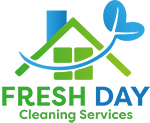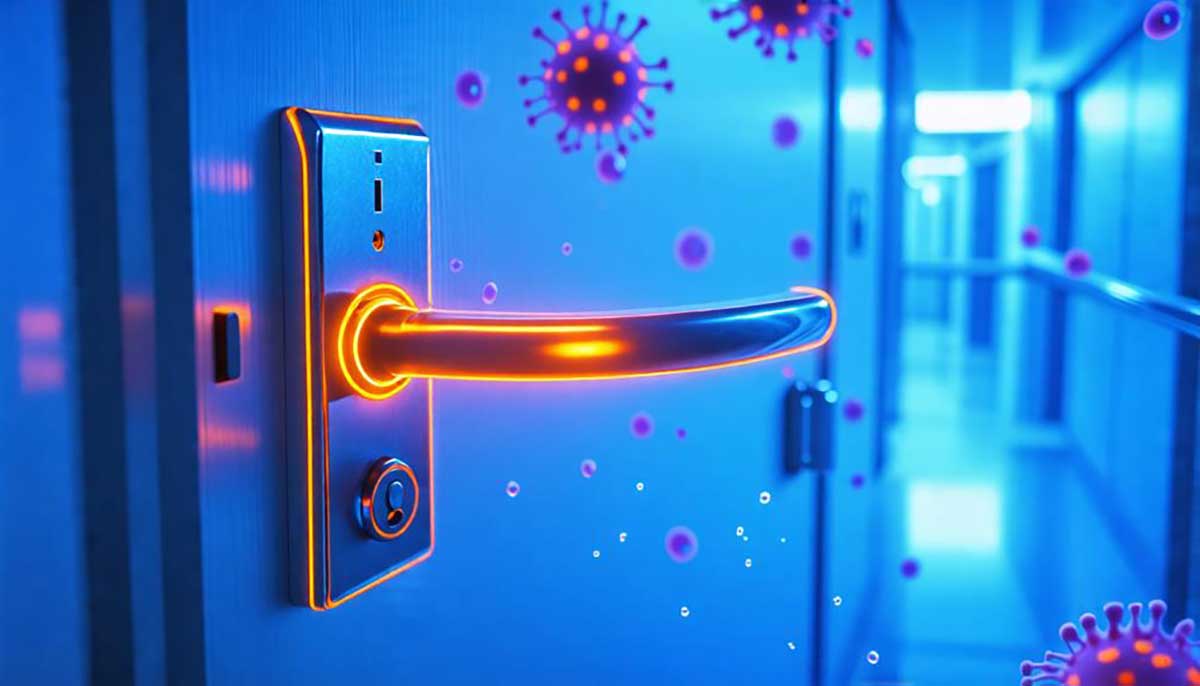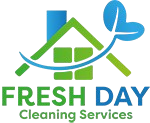High-touch points (HTPs) are surfaces frequently contacted by multiple individuals in public spaces, workplaces, and homes. Common examples include doorknobs, elevator buttons, handrails, touchscreens, shared equipment, and bathroom fixtures. HTPs are significant vectors for pathogen transmission, necessitating thorough and regular cleaning protocols. The CDC endorses HTP disinfection as essential for reducing germ transmission and healthcare-associated infections. Effective management of HTPs involves identifying all potential high-touch surfaces, establishing tailored cleaning protocols, and implementing proper disinfection techniques using EPA-approved cleaning agents. By focusing on HTPs, organizations can significantly improve their infection prevention strategies and promote overall public health. Further exploration reveals additional strategies for minimizing transmission risks.
Common High-Touch Point Areas
High-touch points (HTPs) are prevalent across various environments, including public spaces, workplaces, and personal living areas. In public spaces, HTPs often include elevator buttons, handrails, and touchscreens on kiosks or ATMs. Workplaces and offices contain numerous HTPs such as doorknobs, shared equipment, and conference room surfaces, while personal living environments feature HTPs like kitchen appliances, bathroom fixtures, and electronic devices.
Public Spaces
Public spaces are rife with surfaces that countless individuals come into contact with throughout the day. These high touch points (HTPs) in communal areas include doorknobs, elevator buttons, handrails, and shared seating, which serve as significant vectors for germ transmission. Pathogens can persist on these surfaces for extended periods, increasing the risk of spreading infectious diseases like colds, flu, and COVID-19.
To mitigate this risk, implementing rigorous cleaning and disinfecting protocols for HTPs is essential. Regular attention to these areas can lead to measurable decreases in absenteeism and presenteeism in workplace environments. Effective cleaning practices not only reduce the spread of germs but also improve a sense of safety and trust among users of shared spaces.
The visibility of cleaning staff attending to HTPs reinforces the importance of hygiene in public areas. This visible commitment to maintaining cleanliness can boost community comfort and emphasize the collective responsibility in preventing disease transmission. By prioritizing the sanitation of high touch points, public spaces can significantly reduce the risk of pathogen spread and promote overall public health.
Workplaces and Offices
Vigilance in workplace hygiene is paramount when addressing common high-touch point areas in offices and professional environments. These high-touch surfaces, frequently encountered by multiple individuals, serve as potential vectors for bacteria and pathogens. Doorknobs, light switches, shared equipment, and restroom fixtures are primary concerns due to their constant use and exposure to various contaminants.
Desks and workstations, often overlooked, are significant high-touch surfaces due to continuous interaction with personal items, electronics, and shared tools. Break room areas, including kitchen counters, microwaves, and coffee machines, pose additional risks as they are accessed by numerous employees throughout the day. In multi-story buildings, elevator buttons and handrails require particular attention to reduce the risk of infection transmission.
Office supplies such as staplers, photocopiers, and shared computers also fall under the high-touch category, necessitating regular disinfection. To maintain health and safety standards, organizations should implement comprehensive cleaning services that focus on these critical areas. By prioritizing the sanitization of these high-touch points, workplaces can significantly mitigate the spread of harmful microorganisms and create a more hygienic environment for employees.
Personal Living Environments
The sanctity of our personal living spaces belies the presence of numerous high-touch points that can harbor potentially harmful microorganisms. In residential environments, common high-touch surfaces include doorknobs, light switches, faucets, and remote controls. These frequently handled items serve as potential reservoirs for pathogens, necessitating regular cleaning and disinfection to mitigate the spread of bacteria and viruses.
Cell phones, in particular, present a significant risk due to their constant contact with hands and faces, making them prolific breeding grounds for microbial contamination. Shared surfaces such as kitchen tables and chairs also accumulate germs from multiple users, increasing the likelihood of cross-contamination. Often overlooked, keys are another high-touch item that can facilitate the transfer of pathogens within the household.
To maintain a hygienic living environment and reduce the risk of infection transmission, it is essential to implement a systematic approach to cleaning and disinfecting these high-touch areas. Regular sanitization of these surfaces, using appropriate cleaning agents and techniques, can significantly diminish the potential for bacterial and viral spread, thereby safeguarding the health of household members.
Importance of HTP Cleaning
Regular cleaning of high-touch points (HTPs) is a critical component of effective infection prevention strategies. By focusing on these frequently contacted surfaces, organizations can significantly reduce health risks associated with the transmission of pathogens. Implementing a systematic approach to HTP cleaning not only minimizes the spread of infectious agents but also contributes to a safer, more hygienic environment for occupants.
Health Risk Reduction
Through consistent and thorough cleaning of high touch points (HTPs), organizations can significantly reduce health risks and minimize the spread of infectious diseases. Regular disinfection of these surfaces effectively eliminates bacteria responsible for illnesses such as colds, flu, and COVID-19, contributing to a healthier workplace environment. The Centers for Disease Control and Prevention (CDC) endorses high touch point disinfection as a vital measure to lower the risk of germ transmission in both public and private spaces.
Implementing rigorous HTP cleaning protocols has been shown to reduce the incidence of healthcare-associated infections (HAIs) and other communicable diseases. By targeting these frequently contacted surfaces with appropriate cleaning products, organizations can create a barrier against pathogen transmission. This proactive approach to disease control not only protects individual health but also contributes to lower absenteeism rates among employees. The resulting improvement in overall employee well-being is fundamental for sustaining productivity and morale within the workplace. To maximize effectiveness, it is important to clean and disinfect HTPs regularly, using evidence-based methods and products recommended by health authorities.
Infection Prevention Strategies
At the forefront of infection prevention strategies, high touch point (HTP) cleaning stands as a critical component for maintaining a safe and healthy environment. This targeted approach focuses on surfaces frequently contacted by multiple individuals, which are potential reservoirs for bacteria and pathogens. Regular and thorough cleaning of these high touch areas significantly reduces the transmission of infectious diseases, including common illnesses and healthcare-associated infections (HAIs).
The Centers for Disease Control and Prevention (CDC) emphasizes the importance of HTP cleaning as a key measure in infection prevention protocols. By implementing improved cleaning regimens that prioritize these surfaces, organizations can effectively minimize the spread of harmful microorganisms. Studies have demonstrated that consistent attention to high touch points not only decreases absenteeism and presenteeism among employees but also fosters a culture of wellness within the workplace. This proactive stance on infection prevention through meticulous HTP cleaning contributes to a healthier environment overall, reducing the risk of disease transmission and promoting individual and collective well-being. Consequently, integrating HTP cleaning into standard hygiene practices is essential for comprehensive infection control strategies in various settings.
Effective Disinfection Techniques
Effective disinfection of high-touch points requires careful selection of appropriate cleaning agents, with preference given to EPA-registered, hospital-grade disinfectants or alcohol solutions containing at least 70% alcohol. Proper application methods involve first cleaning surfaces with soap or detergent to remove dirt, followed by thorough application of the disinfectant, allowing it to air dry for maximum efficacy. The frequency of disinfection should be increased during illness outbreaks, with regular cleaning schedules established to maintain a hygienic environment in both residential and commercial settings.
Choosing Appropriate Cleaning Agents
Selecting appropriate cleaning agents is vital for effective disinfection of high touch points. When choosing disinfectants, prioritize EPA-registered, hospital-grade products to guarantee adequate germ elimination. For best results, clean visibly dirty surfaces with soap or detergent before applying disinfectants, as this step helps reduce the amount of organic matter and improves disinfectant efficacy.
Alcohol-based solutions containing at least 70% alcohol are highly effective for high touch points. Diluted bleach solutions can also be utilized when necessary. Regardless of the chosen agent, adhering to manufacturer-specified contact times is essential. Allow disinfectants to air dry to maximize their germicidal effectiveness.
| Cleaning Agent | Effectiveness | Application | Contact Time | Safety Considerations |
|---|---|---|---|---|
| 70%+ Alcohol | High | Spray/Wipe | 30 seconds | Flammable |
| Bleach Solution | High | Spray/Wipe | 1-10 minutes | Corrosive, Toxic Fumes |
| EPA-Registered | Varied | As directed | As specified | Follow SDS |
| Soap/Detergent | Pre-clean | Scrub/Rinse | N/A | Generally safe |
| Quaternary Ammonium | High | Spray/Wipe | 1-10 minutes | Skin/Eye Irritant |
Regular application of appropriate cleaning agents on high touch points, especially during illness outbreaks, significantly reduces pathogen transmission risk and promotes a healthier environment.
Proper Application Methods
To guarantee ideal disinfection of high-touch points, proper application methods are vital. These frequently touched surfaces require meticulous cleaning to reduce the amount of pathogens present. Begin by cleaning the surface to remove visible dirt and debris, confirming the disinfectant can effectively penetrate and eliminate microorganisms.
When applying disinfectants, adhere to the following guidelines:
- Use EPA-registered hospital-grade disinfectants or solutions containing at least 70% alcohol
- Apply the product generously, guaranteeing complete surface coverage
- Allow the disinfectant to remain wet for the manufacturer-specified contact time
- Use disposable materials or thoroughly clean reusable items after use
Proper application techniques are essential for effective disinfection. Carefully follow manufacturer instructions regarding dilution ratios and safety precautions. Verify disinfectants are applied evenly and remain wet on surfaces for the recommended duration. This contact time is critical for peak germicidal activity.
To maintain a hygienic environment, implement a regular cleaning schedule for high-touch points. Use appropriate personal protective equipment when handling cleaning agents, and dispose of or sanitize cleaning materials properly to prevent cross-contamination. By adhering to these proper application methods, the risk of pathogen transmission via high-touch surfaces can be significantly reduced.
Frequency of Disinfection
Regular disinfection of high-touch points is vital for maintaining a hygienic environment and reducing the risk of pathogen transmission. High touch points should be disinfected daily, particularly during cold and flu season or when illness is present in the household. This frequent cleaning significantly reduces the amount of germs and pathogens that individuals may come into contact with throughout the day.
Effective disinfection techniques involve a two-step process. First, surfaces should be cleaned to remove dirt and debris. Then, EPA-registered disinfectants should be applied and allowed to air dry for ideal germ-killing action. For maximum efficacy, specialized protocols recommend using alcohol solutions containing at least 70% alcohol or diluted bleach solutions.
Proper application methods are essential for ensuring thorough disinfection. Facilities maintenance personnel should wear gloves and strictly adhere to manufacturer instructions to avoid ineffective cleaning and potential health risks. By implementing routine disinfection of high touch points such as doorknobs, light switches, and shared electronics, the overall pathogen load on surfaces is minimized, contributing to a healthier living or working environment.
HTP Management in Workplaces
Effective HTP management in workplaces begins with the systematic identification and prioritization of frequently touched surfaces and objects. A comprehensive assessment should be conducted to catalog all potential HTPs, including doorknobs, light switches, shared equipment, and digital interfaces. Once identified, a structured cleaning protocol must be implemented, detailing the frequency, methods, and appropriate disinfectants for each HTP to guarantee consistent and thorough sanitization.
Identification and Prioritization
Identifying and prioritizing high touch points (HTPs) in the workplace forms the cornerstone of effective contamination control strategies. These frequently touched surfaces serve as potential transmission routes for pathogens, necessitating targeted cleaning approaches. By recognizing and addressing HTPs, organizations can significantly reduce the spread of infections and improve employee health.
To effectively manage HTPs, consider the following steps:
- Conduct a comprehensive workplace assessment to identify all potential HTPs
- Establish a hierarchy of HTPs based on frequency of contact and user traffic
- Develop tailored cleaning protocols for each HTP category
- Implement a monitoring system to guarantee consistent adherence to cleaning schedules
Regular training for cleaning staff is essential to maintain awareness of critical areas requiring frequent disinfection. This education should emphasize the importance of HTPs in overall workplace hygiene and their role in minimizing pathogen transmission.
Cleaning Protocol Implementation
Following the identification and prioritization of high touch points (HTPs), implementing a robust cleaning protocol is the next essential step in managing workplace contamination risks. This protocol should encompass regular cleaning and disinfection of HTPs multiple times a day, especially in high-traffic areas. Effective implementation requires staff training on proper cleaning techniques, including the correct use of disinfectants and personal protective equipment (PPE).
A systematic approach to monitoring and documenting cleaning schedules guarantees compliance with hygiene standards and supports accountability among cleaning staff. Engaging employees in the importance of HTP cleaning fosters a culture of health and safety, enhancing overall workplace hygiene.
| Protocol Element | Action | Frequency |
|---|---|---|
| Staff Training | Educate on techniques | Monthly |
| Cleaning Schedule | Disinfect HTPs | Multiple times daily |
| Documentation | Record cleaning tasks | After each cleaning |
To maintain ideal workplace hygiene, it is essential to regularly review and update the cleaning protocol based on evolving best practices and employee feedback. This proactive approach helps minimize the risk of germ transmission and supports a healthier work environment for all occupants.
Reducing Transmission Through HTPs
Effective reduction of pathogen transmission through high-touch points (HTPs) requires a multi-faceted approach. Implementing rigorous cleaning and disinfection protocols, coupled with the strategic deployment of touchless technology, can significantly decrease surface contamination. Additionally, promoting and enforcing personal hygiene practices, such as proper hand washing and the use of hand sanitizers, further improves the overall efficacy of HTP transmission reduction efforts.
Cleaning and Disinfection Protocols
How can organizations effectively reduce pathogen transmission through high-touch points (HTPs)? Implementing rigorous cleaning and disinfection protocols is vital. Regular sanitization of HTPs using EPA-registered disinfectants, following manufacturer guidelines for application and contact time, significantly decreases the presence of harmful pathogens.
To maintain a hygienic environment and minimize the spread of infections, organizations should:
- Conduct daily cleaning of HTPs, intensifying efforts during illness outbreaks
- Use alcohol solutions (≥70% concentration) or diluted bleach solutions for effective disinfection
- Guarantee proper training of cleaning staff on HTP identification and sanitization techniques
- Implement a monitoring system to verify adherence to cleaning protocols
Consistent application of these measures can substantially reduce the risk of pathogen transmission via HTPs. By prioritizing the regular disinfection of frequently touched surfaces, organizations can create a healthier workplace environment, potentially lowering absenteeism rates. It is critical to maintain vigilance in cleaning practices, adapting protocols as needed based on current health guidelines and emerging research on pathogen transmission through high-touch surfaces.
Touchless Technology Implementation
While cleaning protocols are fundamental, organizations can further reduce pathogen transmission through high-touch points by implementing touchless technology solutions. These innovations significantly decrease the need for physical contact with high-touch surfaces, minimizing the risk of germ spread.
Automatic doors and motion-sensor faucets exemplify effective touchless technology applications, eliminating the necessity to interact with frequently contacted surfaces. Likewise, touchless payment systems in public spaces decrease hand-to-surface contact, a critical factor in pathogen transmission. Studies indicate that integrating touchless controls in restrooms leads to substantial reductions in microbial loads on frequently touched surfaces.
Voice-activated devices further improve hygiene by limiting interactions with high-touch points in both residential and commercial settings. These technologies not only promote a cleaner environment but also bolster employee and customer confidence in safety measures, particularly in high-traffic areas.
Personal Hygiene Practices
What personal hygiene practices can individuals adopt to reduce transmission through high-touch points (HTPs)? Implementing a comprehensive approach to personal hygiene is vital in minimizing the risk of pathogen transfer from frequently contacted surfaces. Regular hand washing with soap and water for at least 20 seconds remains the gold standard for reducing germ transmission. When soap and water are unavailable, using hand sanitizer containing a minimum of 60% alcohol provides an effective alternative.
To further reduce transmission through high-touch points, individuals should:
- Avoid touching their face, especially after contact with HTPs
- Clean and disinfect frequently touched surfaces regularly
- Use gloves when cleaning or interacting with shared equipment
- Utilize touchless technology when possible to minimize direct contact
Maintaining vigilance in personal hygiene practices is essential in environments with frequent contact among multiple individuals. By consistently adhering to these measures, the risk of transferring pathogens from high-touch points to mucous membranes is significantly reduced. Regular cleaning of HTPs, combined with proper hand hygiene, creates a robust defense against the spread of infections, supporting overall public health efforts in shared spaces.
Frequently Asked Questions
What Is a High Touch Point?
Like invisible gateways for germs, high touch points are frequently contacted surfaces that serve as potential transmission hotspots for pathogens. These critical areas include doorknobs, light switches, handrails, and shared equipment. Due to their extensive interaction with multiple individuals, high touch points require vigilant maintenance through regular cleaning and disinfection protocols. Implementing targeted hygiene practices for these surfaces is paramount in minimizing contamination risks and safeguarding public health in both residential and commercial environments.
What Are Examples of High Touch Tools?
Examples of high touch tools include commonly handled items such as keys, doorknobs, remote controls, and cell phones. These objects are frequently used by multiple individuals, making them potential vectors for pathogen transmission. Other examples encompass shared equipment like computer keyboards, touchscreens, and point-of-sale terminals. In communal spaces, items such as elevator buttons, light switches, and handrails are also classified as high touch tools. Regular disinfection of these items is essential for maintaining hygiene and preventing the spread of infectious agents.
How Would You Explain and Define High Touch Surfaces?
Like magnets for germs, high-touch surfaces are frequently contacted areas that act as transmission hubs for pathogens. These surfaces include doorknobs, light switches, handrails, elevator buttons, and shared equipment. Characterized by multiple user interactions throughout the day, they pose significant risks for cross-contamination. To mitigate health hazards, these surfaces require regular, thorough cleaning and disinfection protocols. Implementing a targeted hygiene approach for high-touch surfaces is essential in maintaining a safe environment and minimizing the spread of infectious agents.
Which of the Following Are Common Examples of High Touch Surfaces?
Common examples of high touch surfaces include doorknobs, light switches, remote controls, cell phones, and communal surfaces such as tables and chairs. These items are frequently handled by multiple individuals, making them potential vectors for pathogen transmission. Doorknobs serve as primary contact points in buildings, while light switches are repeatedly used throughout the day. Remote controls and cell phones are personal devices that accumulate bacteria through constant handling. Shared surfaces in public spaces also qualify as critical high touch points.








